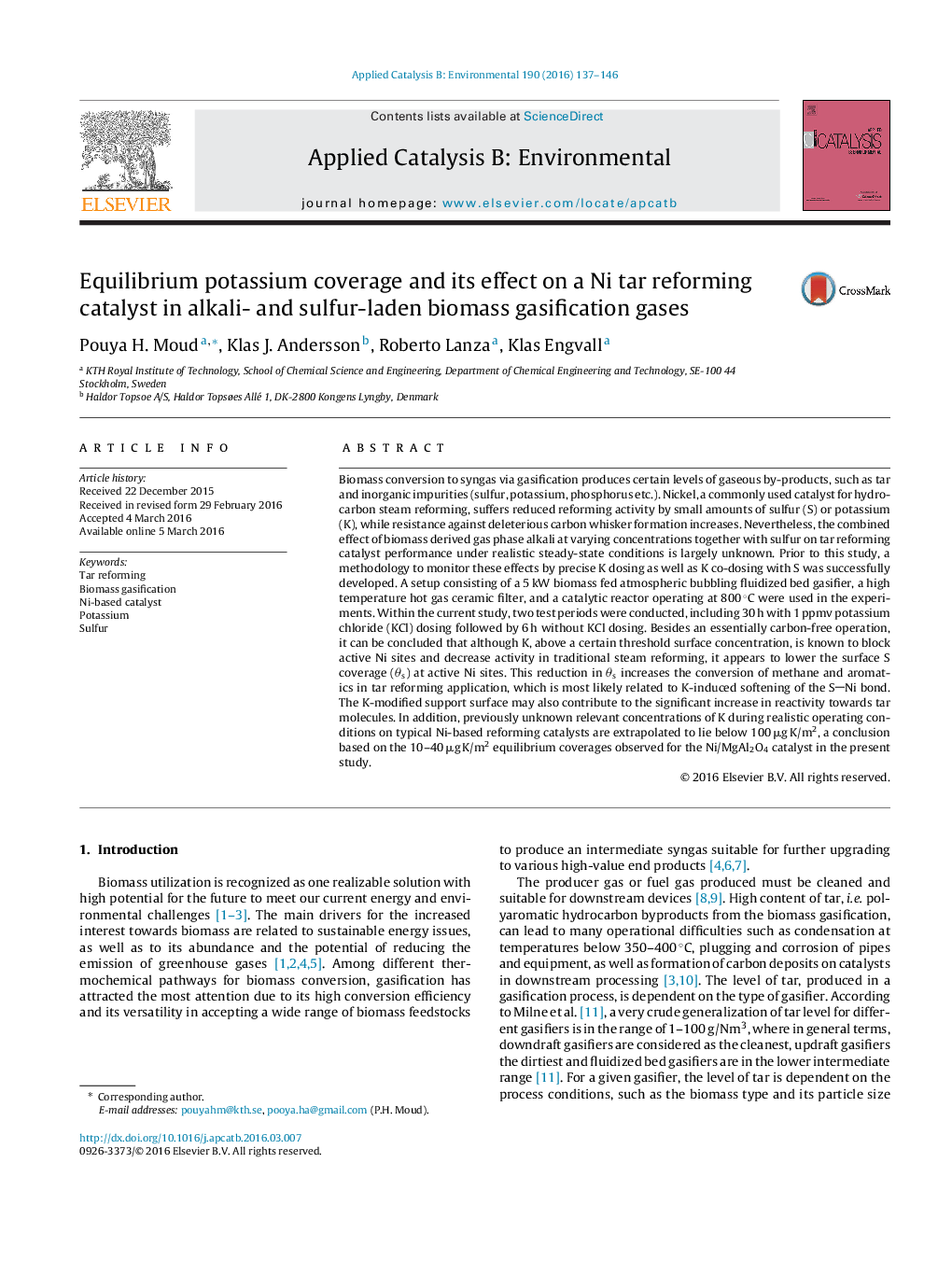| کد مقاله | کد نشریه | سال انتشار | مقاله انگلیسی | نسخه تمام متن |
|---|---|---|---|---|
| 44933 | 46380 | 2016 | 10 صفحه PDF | دانلود رایگان |
• Relevant K equilibrium coverages on Ni/MgAl2O4 are in the range of 10–40 μg K/m2.
• K equilibrium coverages on typical Ni reforming catalysts lie below 100 μg K/m2.
• K appears to lower the θs on Ni and thus improve methane and tar reforming.
• Increase in sulfur resistivity is likely related to K-induced SNi bond weakening.
• K-promotion of the inert support may contribute to increased tar reforming activity.
Biomass conversion to syngas via gasification produces certain levels of gaseous by-products, such as tar and inorganic impurities (sulfur, potassium, phosphorus etc.). Nickel, a commonly used catalyst for hydrocarbon steam reforming, suffers reduced reforming activity by small amounts of sulfur (S) or potassium (K), while resistance against deleterious carbon whisker formation increases. Nevertheless, the combined effect of biomass derived gas phase alkali at varying concentrations together with sulfur on tar reforming catalyst performance under realistic steady-state conditions is largely unknown. Prior to this study, a methodology to monitor these effects by precise K dosing as well as K co-dosing with S was successfully developed. A setup consisting of a 5 kW biomass fed atmospheric bubbling fluidized bed gasifier, a high temperature hot gas ceramic filter, and a catalytic reactor operating at 800 °C were used in the experiments. Within the current study, two test periods were conducted, including 30 h with 1 ppmv potassium chloride (KCl) dosing followed by 6 h without KCl dosing. Besides an essentially carbon-free operation, it can be concluded that although K, above a certain threshold surface concentration, is known to block active Ni sites and decrease activity in traditional steam reforming, it appears to lower the surface S coverage (θs) at active Ni sites. This reduction in θs increases the conversion of methane and aromatics in tar reforming application, which is most likely related to K-induced softening of the SNi bond. The K-modified support surface may also contribute to the significant increase in reactivity towards tar molecules. In addition, previously unknown relevant concentrations of K during realistic operating conditions on typical Ni-based reforming catalysts are extrapolated to lie below 100 μg K/m2, a conclusion based on the 10–40 μg K/m2 equilibrium coverages observed for the Ni/MgAl2O4 catalyst in the present study.
Figure optionsDownload as PowerPoint slide
Journal: Applied Catalysis B: Environmental - Volume 190, 5 August 2016, Pages 137–146
